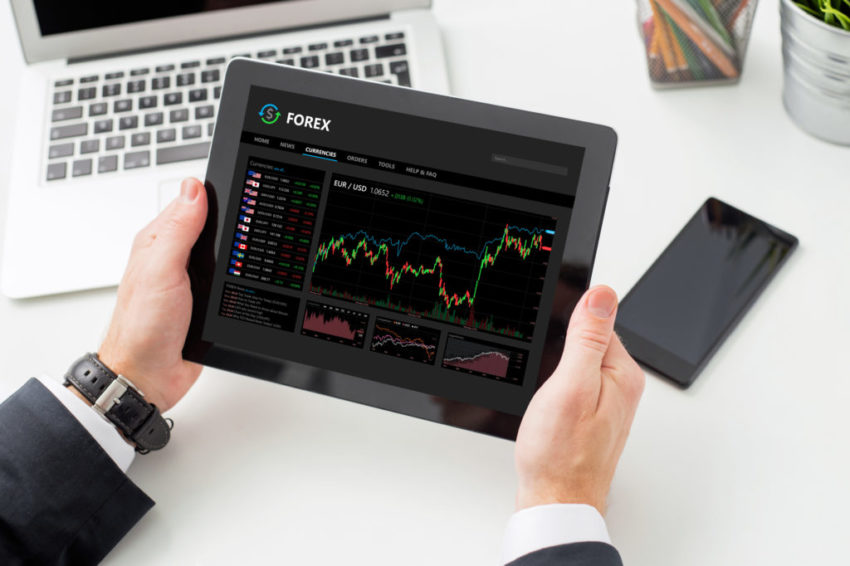Successful forex trading requires a strategy — it is your detailed plan of action. A strategy determines how you identify entry and exit points. Traders should stick to their chosen framework to achieve consistency. Discover systems most commonly used in South Africa.
1. Following the Trends
Prices either move within a range or form trends. The latter start when the exchange rate goes over its area of support (to rise higher) or resistance (to plunge deeper). This allows the market to achieve new highs and lows. Keeping track of such trajectories can help you make a profit in relatively stable conditions.
When resistance is broken through, so the price starts falling lower, some traders will short sell for fear of bigger losses. Buyers, the other hand, delay operations because they hope to achieve an even lower (and thus favourable) price. These two sentiments are observed until the market bottoms out — i.e., starts rising again. Confidence in the instrument is gradually restored.
This describes a typical trend following strategy. Long positions are opened after support is surpassed, so a new low is registered. Short positions are initiated when resistance is broken through, as the market achieves a new high. You can receive free guidance on this and other popular types of FXTM forex strategy from the global ForexTime broker.
Trend following requires a specific arsenal of tools — in this case, technical indicators. They may detect the beginning of a trend fairly accurately. It is known as the breakout point. Of course, the price may leave the range and quickly return. There is no way to know for sure whether you are looking at the inception of a new trend. However, trend following is still one of the most successful approaches. Trends may be lasting and extreme, which works to your advantage.
2. 4-Hour Forex Trading Strategy
As a variation of the swing strategy, this method is based on two types of MAs (moving averages). The trader applies these indicators to a 4-hour base chart to spot entry and exit signals. However, actual trades are opened and closed using another (1-hour) chart. The latter always has a shorter time frame than the base chart, with a gap of least 1 hour.
One moving average describes 34 days, while the other one reflects changes over a 55-day segment. Both must be moving in the same direction to justify a long or short position. For example, when the price falls lower than the indicator lines, with 34-day MA under 55-day MA, there are grounds for a long position (buying). The market has achieved a new low. On the other hand, when price action is above both MAs, and the shorter one is higher than the other, selling is reasonable.
3. Counter-Trend Forex Strategies
Traders may also make moves opposite to the trend direction. It is reasonable when they suspect a breakout to be false. It is suggested that the price will return to its range quickly, so prolonged trends will not develop. Indeed, the exchange rate may bounce off its new high or new low, and the same resistance and support will hold.
This strategy is based on the analysis of both levels, and it requires rigorous risk management. It is suitable for both stable and volatile markets. It also means that traders monitor the market closely, as unexpected changes are always possible.
How to Choose a Strategy
There are many other popular strategies beyond trend following and the counter-trend approach. Sadly, no universal recipe for success exists. That is why forex traders need a balanced combination of analytical skills, foresight, and emotional control. They can test every new strategy using the demo mode of their digital terminal.
It is impossible to understand which strategy suits you immediately. Some traders prefer waiting for breakouts, while others rely on ranges. In any case, you should be mindful and keep track of your decisions using a trading journal. Assess results regularly to see what works and what doesn’t. Every decision puts your capital at risk, but is it always justified?
In 2021, traders have dozens of technical indicators at their disposal. There is no shortage of educational material online. It comes in the form of books, articles, blogs, podcasts, and video tutorials created by brokers and prominent traders. Take advantage of this abundance.
Rookie users should stick to the most familiar strategies and start small. It is essential to measure risk meticulously and never put more than 1% of capital at stake per trade. Leverage should also be avoided until sufficient experience is gained. Gradually, you will build your own competence, so you can try more complex methods. However, one may eventually find that less is more.


